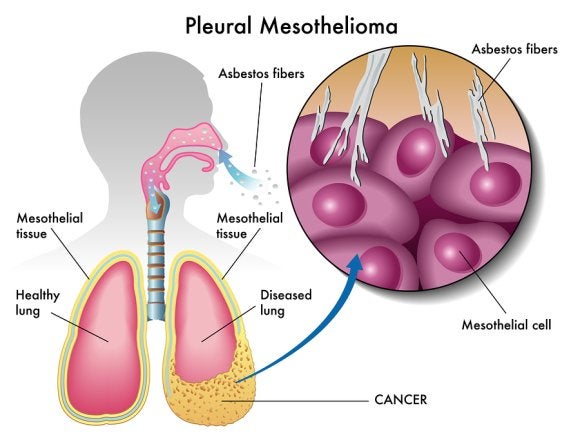-
Lead Poisoning and the Effects on Your Health
If you look at the periodic table, you’ll see several elements that you need to consume for good health—calcium, zinc, and iron are just a few that you might recognize. However, lead is one element that is not good for your health. If you live in an older Bay Area home, contacting a lead paint removal company serving San Francisco and scheduling lead paint testing may be essential for your health and that of your family.
This video provides additional information about the dangers of lead poisoning. Being exposed to even small amounts of lead can be extremely dangerous. It’s not just your two-legged family members who are at risk of poisoning if you don’t schedule lead paint removal—your family pets may also be affected by lead paint. Watch this full video clip to learn how lead can enter the body and affect your health.
-
A Look at the Link between Asbestos and Cancer
Asbestos is a group of naturally occurring minerals that are non-conductive and resistant to fire, heat, and chemicals. These properties make asbestos very versatile and durable, and are the reason why it has been used in many applications, including construction, for decades. However, asbestos can be harmful to the health of those who come into contact with it and has been linked to cancer, which is why many people in the Bay Area turn to companies that provide asbestos abatement in San Francisco . Here is a closer look at the connection between asbestos exposure and cancer.

How Are Asbestos and Cancer Linked?
When asbestos is disturbed, some of its fibers can become airborne and then be inhaled. Once these fibers enter the lungs, they may stay there permanently. Asbestos is a known human carcinogen, meaning that it is recognized to cause cancer, so exposure to and inhalation of asbestos can increase a person’s risk of developing cancer. According to The Mesothelioma Center , asbestos-related cancers affect nearly 8,000 people in the United States each year. In order to reduce cancer risk, it’s essential for homeowners to leave asbestos testing and asbestos removal to the professionals.What Types of Cancer Are Associated with Asbestos?
The two types of cancer that are most commonly associated with asbestos are lung cancer and mesothelioma. There are approximately 4,800 asbestos-related cases of lung cancer diagnosed each year. Mesothelioma is a form of cancer that affects the chest wall and the lining of the lungs, and there are about 3,000 new cases of this form of cancer diagnosed each year. Asbestos exposure is believed to be the primary risk factor for mesothelioma. Other forms of cancer have also been linked to asbestos. These include colorectal cancer, gastrointestinal cancer, esophageal cancer, and kidney cancer.Who Is at Risk for Cancer Due to Asbestos?
Individuals who are exposed to asbestos on a regular basis over a long period of time are most at risk for asbestos-related cancer. Individuals who have worked with asbestos during construction and those who spend long periods of time in buildings with asbestos—especially asbestos that has been disturbed—are at greater risk for cancer. The amount of asbestos inhaled, the length of the exposure period, the makeup of the asbestos fibers, and the source of the asbestos fibers all impact a person’s risk of developing asbestos-related cancer. In addition, smoking and having lung disease can increase a person’s risk of developing cancer due to asbestos exposure. If you suspect that your home contains asbestos, an asbestos abatement company can remove the material to help keep your family safe. -
Asbestos and Mesothelioma
If you live in an older home or work in an older office building, you may be at risk for asbestos-related health conditions, including mesothelioma. Asbestos was commonly used as insulation and in other applications of home construction several decades ago. If you are concerned about your risk due to asbestos exposure, schedule asbestos abatement in San Francisco and read the following information about the link between asbestos and mesothelioma.
Mesothelioma is a type of cancer that affects the lining of the lungs and the abdominal cavity. It is a rare type of cancer, but can be very deadly. Exposure to asbestos is thought to be the primary cause of this condition. The more asbestos fibers you breathe in during your lifetime, the greater your risk of developing mesothelioma becomes. Some of the symptoms of mesothelioma include chest pain, weight loss, dry cough, and shortness of breath. If you are concerned about your mesothelioma risk, contact a company that provides asbestos testing and, if necessary, schedule asbestos removal for your home. If you experience any of the symptoms of mesothelioma before or after the asbestos removal company visits your home, be sure to visit your doctor right away.

-
3 Facts You Need to Know about Indoor Air Quality
You likely give little thought to the air you breathe inside your home or office each day, so you may be surprised to learn just how important indoor air quality can be. There are a number of things that can impact your air quality, and you may need help from an asbestos removal and mold removal company serving San Francisco to ensure your home’s air is safe for you and your family. Continue reading to learn three important facts about indoor air quality.

It Can Be Worse Than Outdoor Air Quality
While outdoor air can have many pollutants, many homes and office buildings actually have worse air quality than the outdoors. Chemicals in paint and other construction materials, mold growth, and dust can all negatively impact indoor air quality. Some older buildings may also have lead paint and asbestos insulation, which can both contribute to poor indoor air quality.It Can Impact Your Health and Comfort
If your home has poor indoor air quality , your family’s health may suffer. Inhaling mold spores can cause a number of symptoms, including respiratory problems and headaches. Lead paint inhalation can be toxic, while inhaling asbestos particles can cause potentially fatal cancer. Even if your home is free from these toxic substances, it can still have poor indoor air quality due to dust buildup in your home, which can contribute to allergies.There Are Steps You Can Take to Improve It
One of the simplest steps you can take to improve your home’s indoor air quality is to change your HVAC filter every month. It’s also important to regularly clean your home and launder your linens to keep allergens at a minimum. If you suspect that your home may have lead paint or asbestos, you can arrange to have lead paint testing or asbestos testing performed and, if necessary, schedule lead paint or asbestos removal. If your home is harboring mold growth, schedule mold remediation services to improve your home’s indoor air quality.
RECENT POSTS
categories
- Uncategorized
- Lead
- Mold
- San Francisco Mold & Asbestos Removal
- Indoor Air Pollution
- Mold Remediation
- Asbestos
- Safe Air Fast
- Mold Inspection
- Remediation
- Bacteria Testing
- Asbestos Testing
- Abatement
- Lead Testing
- Sewer Line
- Lead Survey
- Mold Testing
- Air Quality Inspection
- Home renovations
- Allergies
- Renovation Contractor
- Infographic
- lead paint
- Air Quality
- Air Quality Test
- Mold removal
